
Water injection into the car engine
Content
Motor power is the most common topic in motorist circles. Almost every motorist has thought at least once about how to increase the performance of a power unit. Some install turbines, others ream cylinders, etc. (other methods of increasing power are described in another stаtye). Many who are interested in car tuning are aware of systems that supply a small amount of water or its mixture with methanol.
Most motorists are familiar with such a concept as a water hammer of a motor (there is also a separate review). How can water, which provokes the destruction of the internal combustion engine, at the same time increase its performance? Let's try to deal with this issue, and also consider the advantages and disadvantages that the water methanol injection system has in the power unit.
What is a water injection system?
In short, this system is a tank into which water is poured, but more often a mixture of methanol and water in a 50/50 ratio. It has an electric motor, for example, from a windshield washer. The system is connected by elastic tubes (in the most budgetary version, hoses from the dropper are taken), at the end of which a separate nozzle is installed. Depending on the version of the system, the injection is carried out through one atomizer or several. Water is supplied when air is drawn into the cylinder.
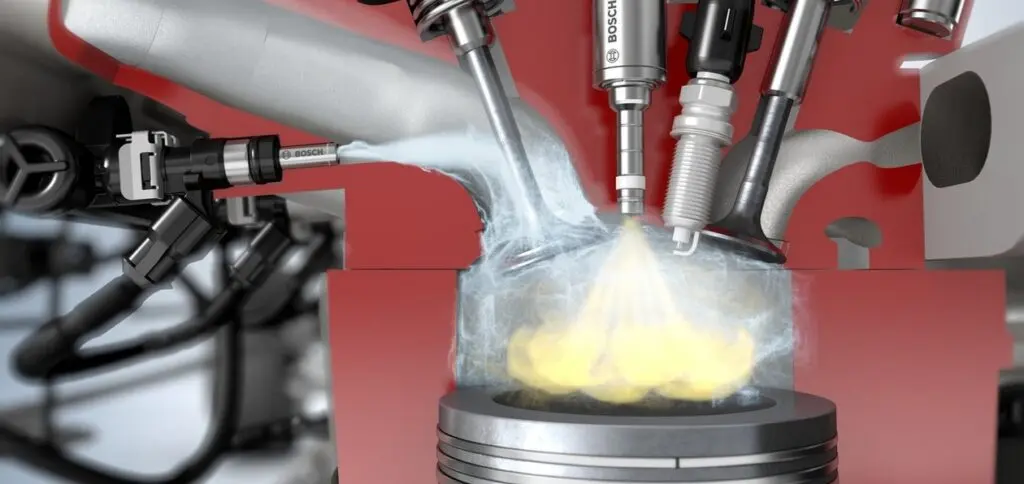
If we take the factory version, then the unit will have a special pump that is electronically controlled. The system will have one or more sensors to help determine the moment and amount of sprayed water.
On the one hand, it seems that water and a motor are incompatible concepts. The combustion of the air-fuel mixture takes place in the cylinder, and, as everyone knows from childhood, the flame (if it is not chemicals that burn) is extinguished by water. Those who "got acquainted" with the hydraulic shock of the motor, from their own experience, was convinced that water is the very last substance that should get into the engine.
However, the idea of water injection is not a figment of the teenage imagination. In fact, this idea is almost a hundred years old. In the 1930s, for the military needs, Harry Ricardo improved the Rolls-Royce Merlin aircraft engine, and also developed synthetic gasoline with a high octane number. here) for aircraft internal combustion engines. The lack of such fuel is a high risk of detonation in the engine. Why is this process dangerous? separately, but in short, the air-fuel mixture should burn evenly, and in this case it literally explodes. Because of this, the parts of the unit are under excessive stress and quickly fail.
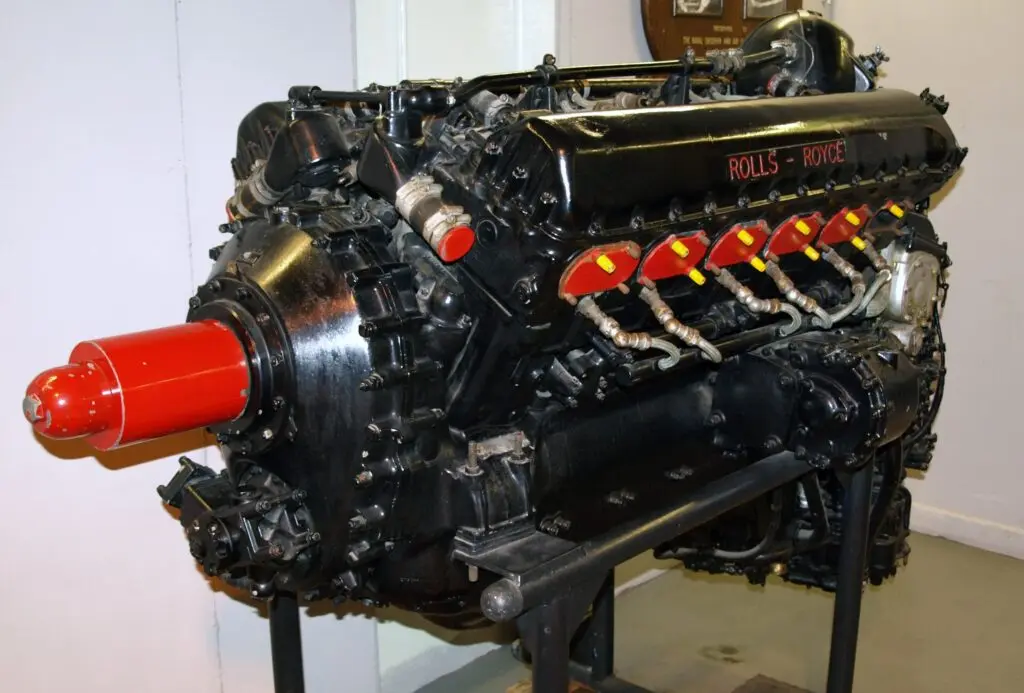
To combat this effect, G. Ricardo conducted a series of studies, as a result of which he was able to achieve the suppression of detonation due to the injection of water. Based on his developments, German engineers managed to almost double the power of the units in their aircraft. For this, the composition MW50 (methanol wasser) was used. For example, the Focke-Wulf 190D-9 fighter was equipped with the same engine. Its peak output was 1776 horsepower, but with a short afterburner (the above-mentioned mixture was fed into the cylinders), this bar rose to 2240 "horses".
This development was used not only in this aircraft model. In the arsenal of German and American aviation, there were several modifications of power units.
If we talk about production cars, then the Oldsmobile F85 Jetfire model, which rolled off the assembly line in the 62nd year of the last century, received a factory installation of water injection. Another production car with engine boost in this way is the Saab 99 Turbo, released in 1967.
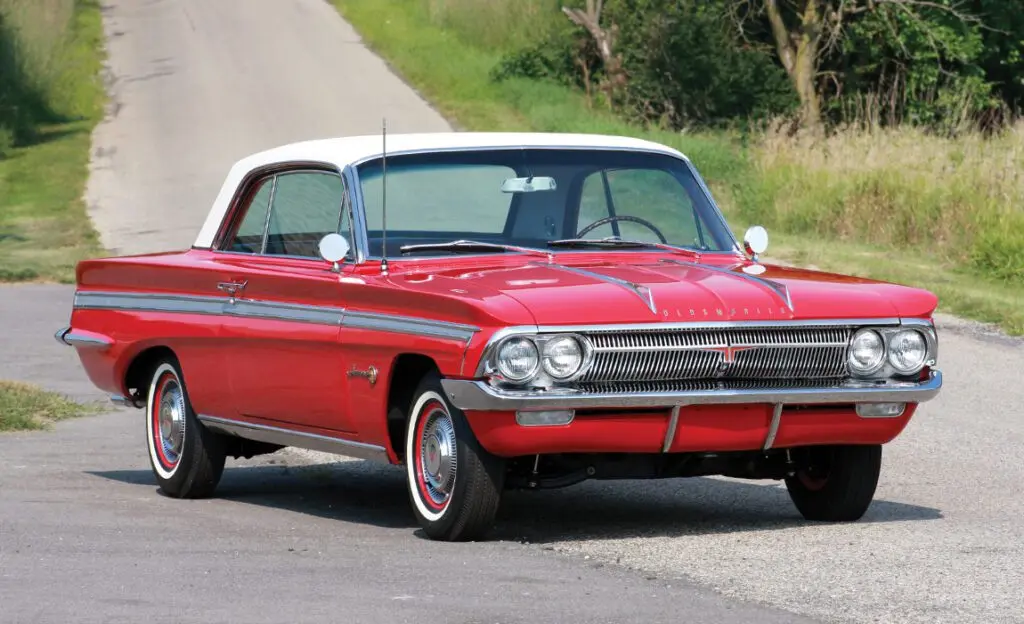

The popularity of this system gained momentum due to its application in 1980-90. in sports cars. So, in 1983, Renault equips its Formula 1 cars with a 12-liter tank, in which an electric pump, a pressure controller and the required number of injectors were installed. By 1986, the team's engineers managed to increase the torque and output of the power unit from 600 to 870 horsepower.
In the racing war of automakers, Ferrari also did not want to "graze the rear", and decided to use this system in some of its sports cars. Thanks to this modernization, the brand managed to gain a leading position among designers. The same concept was developed by the Porsche brand.
Similar upgrades were carried out with cars that participated in races from the WRC series. However, in the early 90s, the organizers of such competitions (including F-1) amended the regulations and banned the use of this system in race cars.
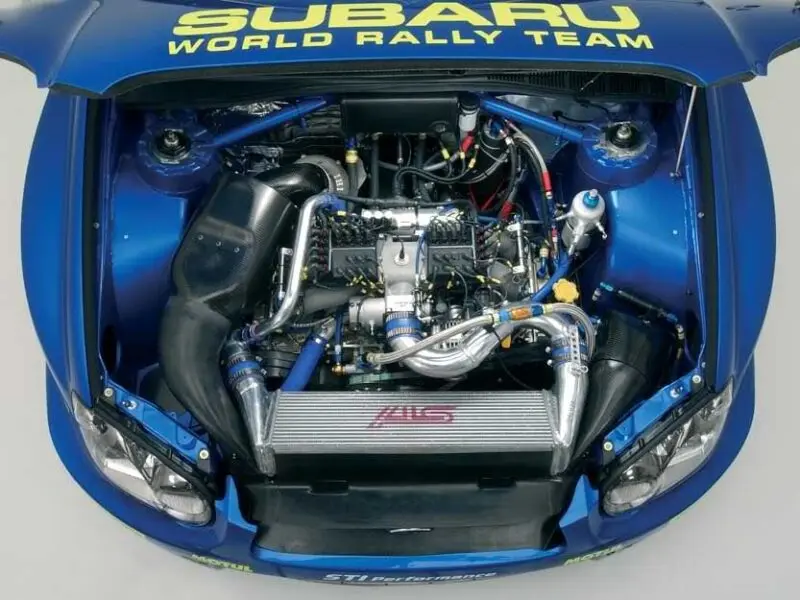
Another breakthrough in the world of motorsport was made by a similar development at drag racing competitions in 2004. The ¼ mile world record was broken by two different vehicles, despite attempts to reach the milestone with various powertrain modifications. These diesel cars were equipped with a water intake manifold.
Over time, cars began to receive intercoolers that reduce the temperature of the air flow before it enters the intake manifold. Thanks to this, the engineers were able to reduce the risk of knocking, and the injection system was no longer necessary. A sharp increase in power became possible thanks to the introduction of a nitrous oxide supply system (officially appeared in 2011).
In 2015, news began to appear about water injection again. For example, the new MotoGP safety car developed by BMW has a classic water spray kit. At the official presentation of the limited edition car, the representative of the Bavarian automaker made that in the future it is planned to release a line of civilian models with a similar system.
What does water or methanol injection give to the engine?
So let's move from history to practice. Why does the motor need water injection? When a strictly limited amount of liquid enters the intake manifold (a drop of no more than 0.1 mm is sprayed), upon contact with a hot medium, it immediately turns into a gaseous state with a high oxygen content.
The cooled BTC compresses much more easily, which means that the crankshaft needs to use slightly less force to perform the compression stroke. Thus, the installation allows several problems to be solved at once.
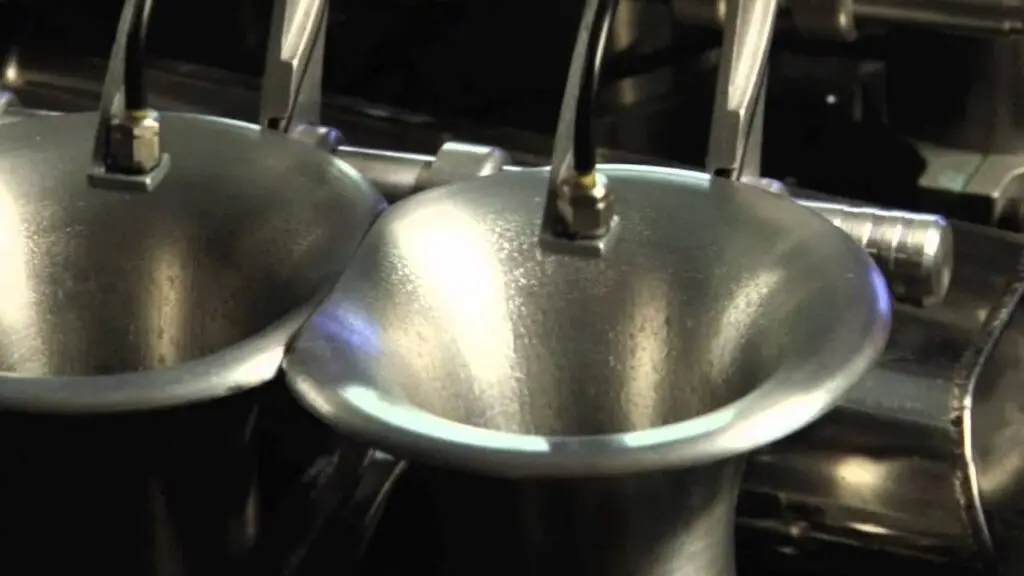
Firstly, hot air has less density (for the sake of experiment, you can take an empty plastic bottle out of a warm house into the cold - it will shrink decently), so less oxygen will enter the cylinder, which means that gasoline or diesel fuel will burn worse. To eliminate this effect, many engines are equipped with turbochargers. But even in this case, the air temperature does not drop, since classic turbines are powered by a hot exhaust that goes through the exhaust manifold. Spraying water allows more oxygen to be supplied to the cylinders to improve combustion efficiency. In turn, this will have a positive effect on the catalyst (for details, read in a separate review).
Secondly, water injection allows you to increase the power of the power unit without changing its working volume and without changing its design. The reason is that in the vaporous state, moisture takes up much more volume (according to some calculations, the volume increases by 1700 times). When water evaporates in a confined space, additional pressure is created. As you know, compression is very important for torque. Without intervention in the design of the power unit and a powerful turbine, this parameter cannot be increased. And since the steam expands sharply, more energy is released from the combustion of the HTS.
Thirdly, due to the spraying of water, the fuel does not overheat, and detonation does not form in the engine. This allows the use of cheaper gasoline with a lower octane number.
Fourthly, due to the factors listed above, the driver may not press the gas pedal so actively to make the car more dynamic. This is achieved by spraying liquid into the internal combustion engine. Despite the increase in power, fuel consumption is not increased. In some cases, with an identical driving mode, the gluttony of the motor is reduced to 20 percent.
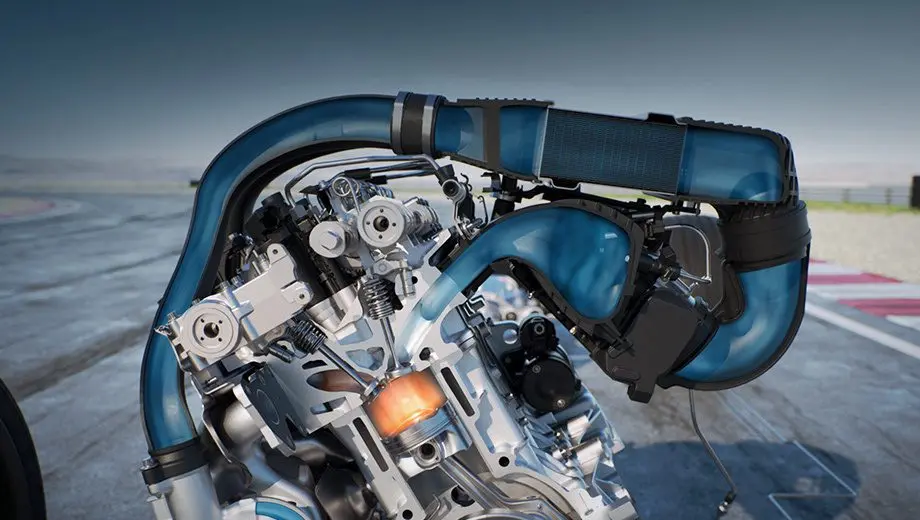
In truth, this development also has opponents. The most common misconceptions about water injection are:
- What about the water hammer? It cannot be denied that when water enters the cylinders, the motor experiences a water hammer. Since water has a decent density when the piston is in a compression stroke, it cannot reach top dead center (this depends on the amount of water), but the crankshaft continues to rotate. This process can bend the connecting rods, break the keys, etc. In fact, the injection of water is so small that the compression stroke is not affected.
- Metal, in contact with water, rusts over time. This will not happen with this system, because the temperature in the cylinders of a running engine exceeds 1000 degrees. Water turns into a vaporous state at 100 degrees. So, during the operation of the system, there is no water in the engine, but only superheated steam. By the way, when the fuel burns, there is also a small amount of steam in the exhaust gases. Partial evidence of this is the water pouring out of the exhaust pipe (other reasons for its appearance are described here).
- When water appears in the oil, the grease emulsifies. Again, the amount of sprayed water is so small that it simply cannot enter the crankcase. It immediately becomes a gas that is removed along with the exhaust.
- The hot steam destroys the oil film, causing the power unit to catch the wedge. In fact, steam or water does not dissolve the oil. The most real solvent is just gasoline, but at the same time the oil film remains for hundreds of thousands of kilometers.
Let's see how the device for spraying water into the motor works.
How the water injection system works
In modern power units equipped with this system, different types of kits can be installed. In one case, a single nozzle is used, located on the intake manifold inlet before the bifurcation. Another modification uses several injectors of the type distributed injection.
The easiest way to mount such a system is to install a separate water tank in which the electric pump will be placed. A tube is connected to it, through which liquid will be supplied to the sprayer. When the engine reaches the desired temperature (the operating temperature of the internal combustion engine is described in another article), the driver starts spraying to create a wet mist in the intake manifold.
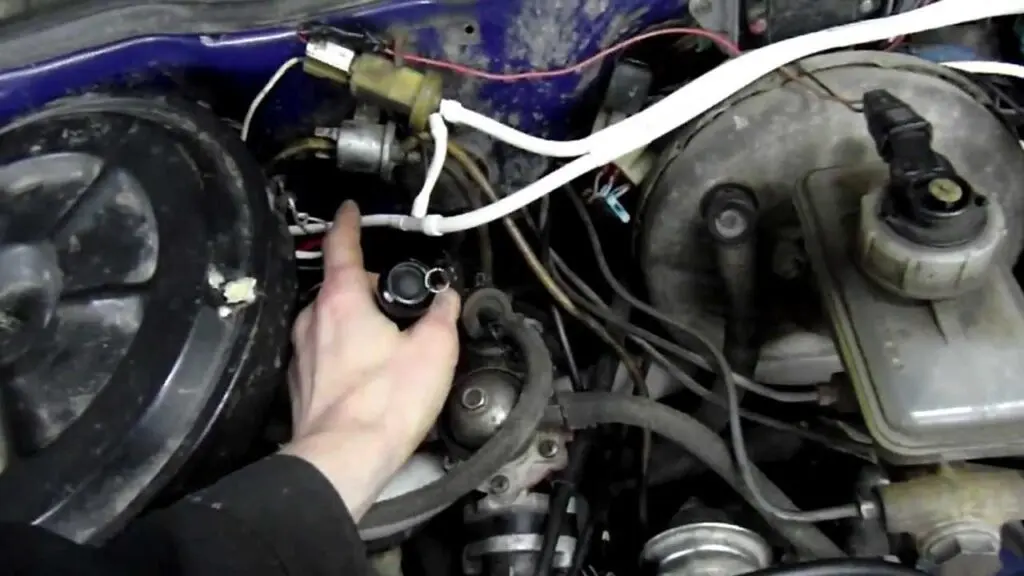
The simplest installation can even be installed on a carburetor engine. But at the same time, one cannot do without some modernization of the intake tract. In this case, the system is controlled from the passenger compartment by the driver.
In more advanced versions, which can be found in auto-tuning shops, the spray mode setting is provided either by a separate microprocessor, or its operation is associated with signals coming from the ECU. In this case, you will need to use the services of an auto electrician to install the system.
The device of modern spraying systems includes the following elements:
- Electric pump providing pressure up to 10 bar;
- One or more nozzles for spraying water (their number depends on the device of the entire system and the principle of distribution of the wet flow over the cylinders);
- The controller is a microprocessor that controls the timing and amount of water injection. A pump is connected to it. Thanks to this element, a constant high-precision dosage is ensured. Algorithms embedded in some microprocessors allow the system to automatically adjust to different operating modes of the power unit;
- A tank for the liquid to be sprayed into the manifold;
- Level sensor located in this tank;
- Hoses of the correct length and appropriate fittings.
The system works according to this principle. The injection controller receives signals from the air flow sensor (for more details about its operation and malfunctions, read here). In accordance with this data, using appropriate algorithms, the microprocessor calculates the time and amount of sprayed liquid. Depending on the modification of the system, the nozzle can simply be made in the form of a sleeve with a very thin atomizer.
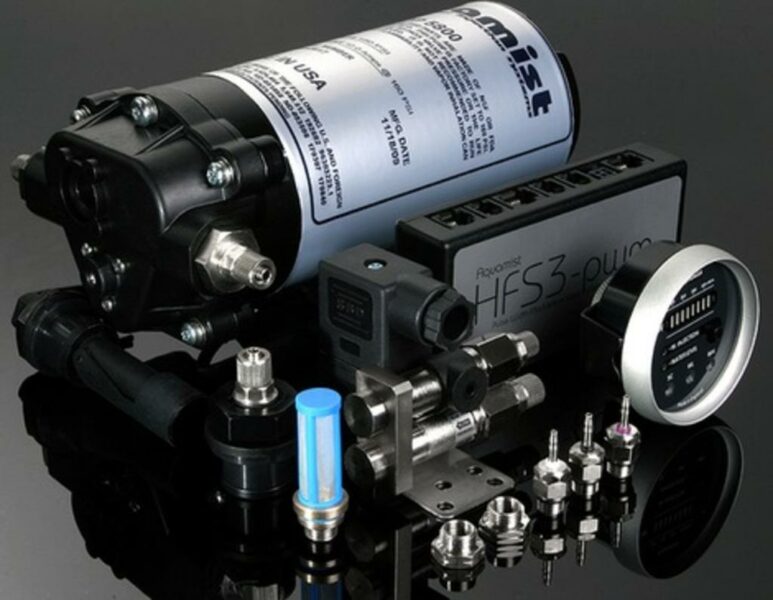
Most modern systems simply give a signal to turn on / off the pump. In more expensive kits, there is a special valve that changes the dosage, but in most cases it does not work correctly. Basically, the controller is triggered when the motor reaches 3000 rpm. and more. Before installing such an installation on your car, you need to take into account that most manufacturers warn about the incorrect operation of the system on some cars. No one will provide a detailed list, since everything depends on the individual parameters of the power unit.
Although the main function of water injection is to increase engine power, it is mainly used only as an intercooler to cool the air flow coming from a red-hot turbine.
In addition to increasing the engine output, many are convinced that the injection also cleans the working cavity of the cylinder and the exhaust tract. Some believe that the presence of steam in the exhaust creates a chemical reaction that neutralizes some of the toxic substances, but in this case, the car will not need an element such as an automobile catalyst or a complex AdBlue system, which you can read about. here.
Pumping water has an effect only at high engine speeds (it must be well warmed up and the air flow must be rapid so that moisture immediately enters the cylinders), and to a greater extent in turbocharged power units. This process provides additional torque and a small increase in power.

If the engine is naturally aspirated, then it will not become significantly more powerful, but it will definitely not suffer from detonation. For a turbocharged internal combustion engine, a water injection installed in front of the supercharger will provide an increase in efficiency due to a decrease in the temperature of the incoming air. And for even greater effect, such a system uses the previously mentioned mixture of water and methanol in a proportion of 50x50.
Advantages and disadvantages
So, the water injection system allows you to:
- Inlet air temperature;
- Provide additional cooling of the elements of the combustion chamber;
- If low-quality (low-octane) gasoline is used, water spraying increases the detonation resistance of the engine;
- Using the same driving mode reduces fuel consumption. This means that with the same dynamics, the car emits less pollutants (of course, this is not so efficient that the car can do without a catalyst and other systems for neutralizing toxic gases);
- Not only to increase power, but also makes the motor turn with a torque increased by 25-30 percent;
- To some extent clean the elements of the intake and exhaust system of the engine;
- Improve throttle response and pedal response;
- Bring the turbine to operating pressure at a lower engine speed.
Despite so many useful features, water injection is undesirable for conventional vehicles, and there are several good reasons why automakers are not implementing it in production vehicles. Most of them are due to the fact that the system has a sporting origin. In the world of motorsport, fuel economy is largely overlooked. Sometimes the fuel consumption reaches 20 liters per hundred. This is due to the fact that the engine is often brought to maximum revs, and the driver almost constantly presses on the gas until it stops. Only in this mode, the effect of the injection is noticeable.
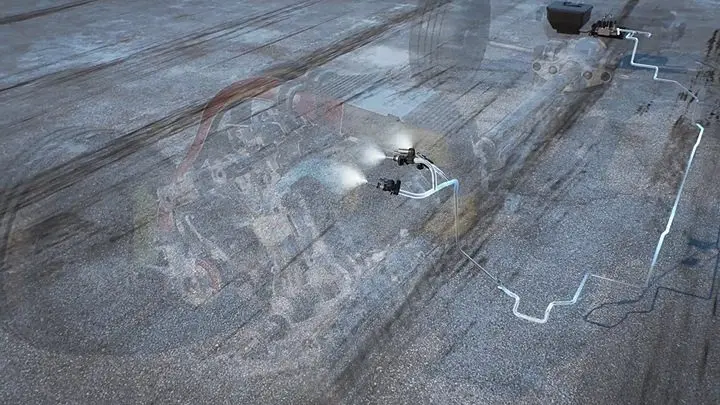
So, here are the main disadvantages of the system:
- Since the installation was primarily intended to improve the performance of sports cars, this development is only effective at maximum power. As soon as the motor reaches this level, the controller fixes this moment and injects water. For this reason, for the installation to work effectively, the vehicle must be operated in sport mode. At low revs, the engine can be more "brooding".
- Water injection is carried out with some delay. First, the motor enters the power mode, the corresponding algorithm is activated in the microprocessor, and a signal is sent to the pump to turn on. The electric pump starts pumping liquid into the line, and only after that the nozzle starts to spray it. Depending on the modification of the system, all this may take about one millisecond. If the car is driving in a quiet mode, then the spraying will have no effect at all.
- In versions with one nozzle, it is impossible to control how much moisture gets into a particular cylinder. For this reason, despite good theory, practice often shows unstable motor operation, even with fully open throttle. This is due to the different temperature conditions in the individual "pots".
- In winter, the system needs refueling not just with water, but with methanol. Only in this case, even in cold weather, the liquid will be freely supplied to the collector.
- For the safety of the motor, the injected water must be distilled, and this is an additional waste. If you use ordinary tap water, very soon lime deposits will accumulate on the walls of the contact surfaces (like scale in a kettle). The presence of foreign solid particles in the motor is fraught with an early breakdown of the unit. For this reason, the distillate should be used. Compared to the insignificant fuel economy (a regular car is not designed for constant operation in sports mode, and the legislation prohibits this on public roads), the installation itself, its maintenance and the use of distillate (and in winter - a mixture of water and methanol) is economically unjustified ...
In truth, some flaws can be fixed. For example, in order for the power unit to operate stably at high rpm or at maximum load at low rpm, a distributed water injection system can be installed. In this case, the injectors will be installed, one for each intake manifold, as in an identical fuel system.
However, the price of such an installation increases significantly and not only because of additional elements. The fact is that the injection of moisture makes sense only in the case of a moving air stream. When the intake valve (or several in the case of some engine modifications) is closed, and this happens for three cycles, the air in the pipe is motionless.
To prevent water from flowing into the collector in vain (the system does not provide for the removal of excess moisture accumulating on the walls of the collector), the controller must determine at what moment and which particular nozzle should come into operation. This complex setup requires expensive hardware. Compared to the insignificant increase in power for a standard car, such an expense is unjustified.
Of course, it is everyone's business to install such a system on your car or not. We have considered both the advantages and disadvantages of such a design. In addition, we suggest watching a detailed video lecture on how water injection works:
Questions and answers:
What is Methanol Injection? This is the injection of a small amount of water or methanol into a running engine. This increases the detonation resistance of poor fuel, reduces the emission of harmful substances, increases the torque and power of the internal combustion engine.
What is methanol water injection for? Methanol injection cools the air drawn in by the engine and reduces the likelihood of engine knocking. This increases the efficiency of the motor due to the high heat capacity of the water.
How does the Vodomethanol system work? It depends on the modification of the system. The most efficient is synchronized with the fuel injectors. Depending on their load, water methanol is injected.
What is Vodomethanol used for? This substance was used in the Soviet Union in aircraft engines before the advent of jet engines. Water methanol reduced the detonation in the internal combustion engine and made the combustion of the HTS smooth.
